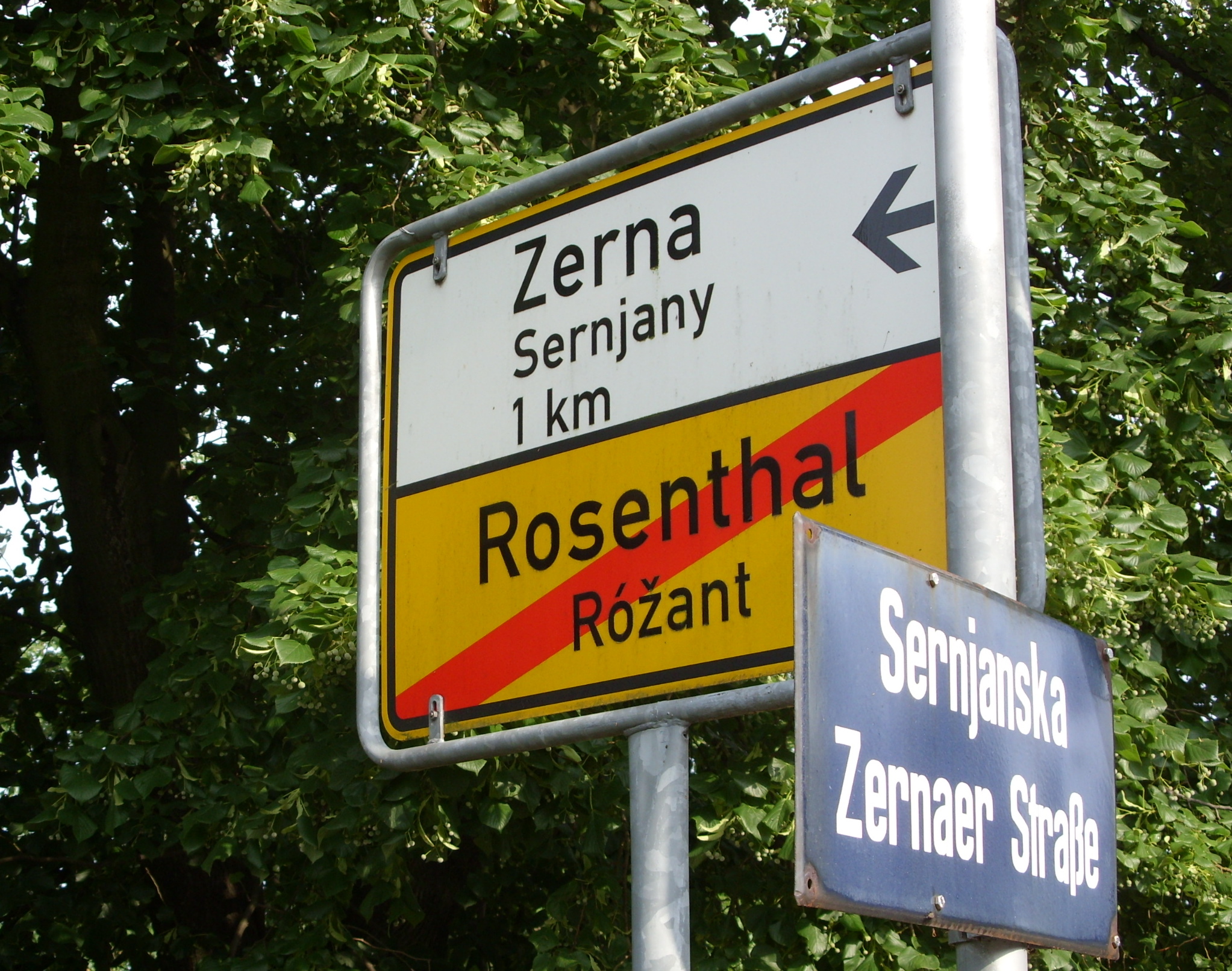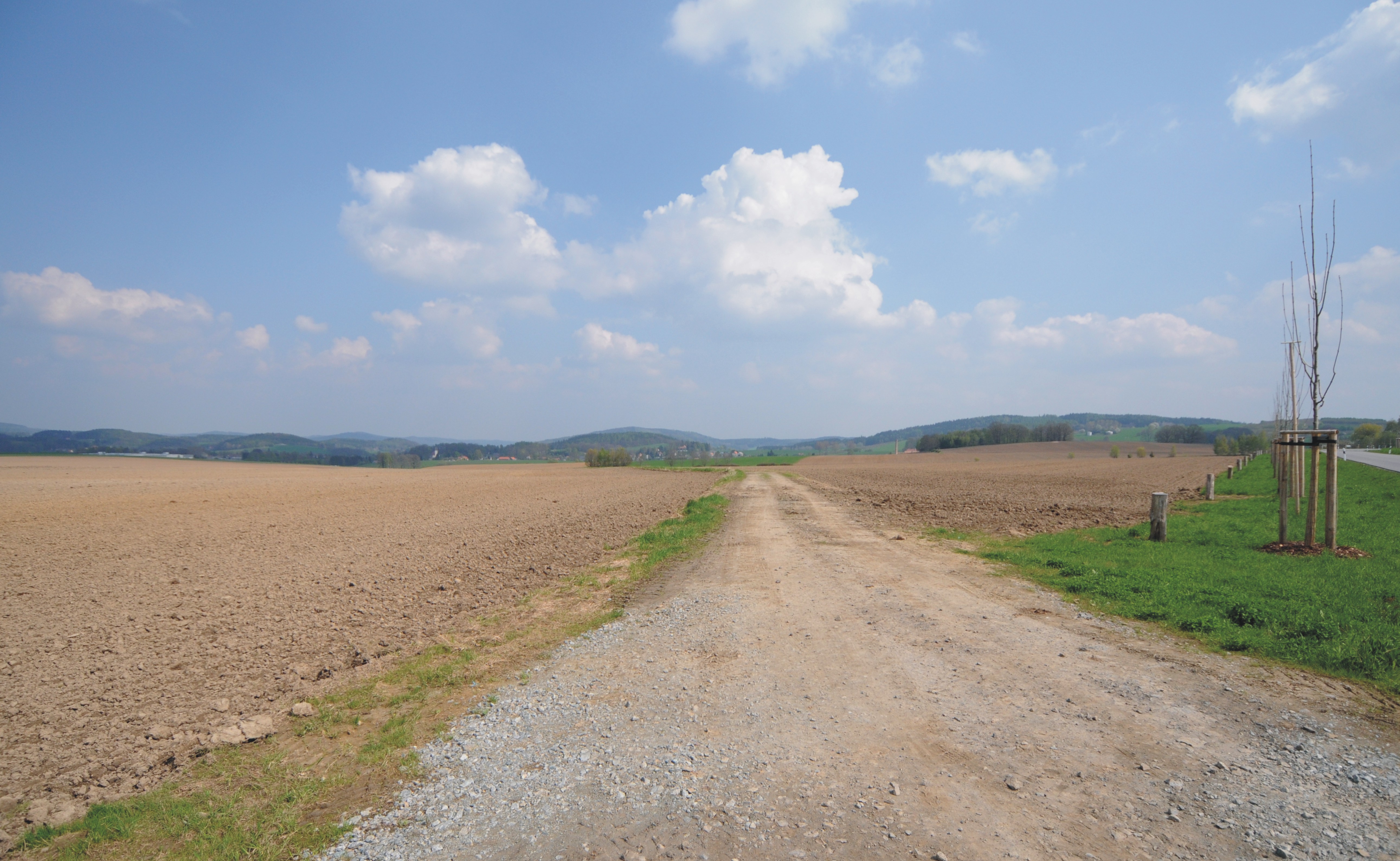|
Doberschau-Gaußig
Doberschau-Gaußig (German) or Dobruša-Huska (Upper Sorbian) is a municipality in the east of Saxony, Germany. It belongs to Bautzen district and lies southwest of the town of Bautzen. The larger part of the municipality belongs to the recognized Sorbian settlement area in Saxony. Upper Sorbian has an official status next to German, all villages bear names in both languages. Geography The municipality is situated at the northern edge of the Lausitzer Bergland (''Lusatian Hills''). Villages The following villages belong to the municipality (names given in German/Upper Sorbian, followed by the number of inhabitants): * Arnsdorf/Warnoćicy - 152 inh. * Brösang/Brězynka - 67 inh. * Cossern/Kosarnja - 91 inh. * Diehmen/Demjany - 229 inh. * Doberschau/Dobruša - 1181 inh. * Drauschkowitz/Družkecy - 68 inh. * Dretschen/Drječin - 113 inh. * Gaußig/Huska - 618 inh. * Gnaschwitz/Hnašecy - 318 inh. * Golenz/Holca - 95 inh. * Grubschütz/Hrubjelčicy - 264 inh. * Günthersdorf/ ... [...More Info...] [...Related Items...] OR: [Wikipedia] [Google] [Baidu] |
Sorbian Settlement Area
hsb, Serbski sydlenski rum, dsb, Serbski sedleński rum, image_map=File:Sorbisches Siedlungsgebiet.png, subdivision_type1=Country, subdivision_name1=Germany, subdivision_type2=State, subdivision_name2=Saxony, subdivision_type3=State, subdivision_name3=Brandenburg The Sorbian settlement area ( dsb, Serbski sedleński rum, hsb, Serbski sydlenski rum, german: Sorbisches Siedlungsgebiet; in Brandenburg officially ''Siedlungsgebiet der Sorben/Wenden'') commonly makes reference to the area in the east of Saxony and the South of Brandenburg in which the West Slavic people of the Sorbs (in Brandenburg also called "Wends") live autochthonously. In colloquial German, it is called Sorbenland (Land of the Sorbs); before 1945 also – sometimes pejoratively – called ''Wendei''. This area was reduced constantly during the centuries due to assimilation, Germanization and strip mining lignite. Additionally, the identification as Sorb is free under federal and state law and cannot be verif ... [...More Info...] [...Related Items...] OR: [Wikipedia] [Google] [Baidu] |
Bautzen (district)
The district of Bautzen (german: Landkreis Bautzen, hsb, Wokrjes Budyšin) is a district in the state of Saxony in Germany. Its largest towns are Bautzen, Bischofswerda, Kamenz, Hoyerswerda and Radeberg. It is the biggest district in Saxony by area, and a member of the Neisse Euroregion. It is bordered to the south by the Czech Republic. Clockwise, it also borders the district of Sächsische Schweiz-Osterzgebirge, the district-free city of Dresden, the district of Meißen, the state of Brandenburg, and the Görlitz district. History Historically, most of Upper Lusatia belonged to Bohemia. After the end of the Thirty Years' War, it became a part of Saxony. Only the small town of Schirgiswalde remained Bohemian until 1809. The district was established in 1994 by merging the former districts of Bautzen and Bischofswerda. The district of Kamenz and the district-free city of Hoyerswerda were merged into the district in August 2008. Geography The district of Bautzen is part ... [...More Info...] [...Related Items...] OR: [Wikipedia] [Google] [Baidu] |
Bautzen
Bautzen () or Budyšin () is a hill-top town in eastern Saxony, Germany, and the administrative centre of the district of Bautzen. It is located on the Spree river. In 2018 the town's population was 39,087. Until 1868, its German name was ''Budissin''. In 1945 the Battle of Bautzen was Hitler’s last victory against the Soviet Union during the Battle of Berlin . Bautzen is often regarded as the unofficial, but historical capital of Upper Lusatia. The town is also the most important cultural centre of the Sorbian minority, which constitutes about 10 percent of Bautzen's population. Asteroid '' 11580 Bautzen'' is named in honour of the city. Names Like other cities and places in Lusatia, Bautzen has several different names across languages. Its German name was also officially changed in 1868. As well as ''Bautzen'' (German) and ''Budyšin'' (Upper Sorbian), the town has had the following names: * German: ''Budissin'' (variants used from c. 11th century onwards; Saxon governme ... [...More Info...] [...Related Items...] OR: [Wikipedia] [Google] [Baidu] |
German Language
German ( ) is a West Germanic languages, West Germanic language mainly spoken in Central Europe. It is the most widely spoken and Official language, official or co-official language in Germany, Austria, Switzerland, Liechtenstein, and the Italy, Italian province of South Tyrol. It is also a co-official language of Luxembourg and German-speaking Community of Belgium, Belgium, as well as a national language in Namibia. Outside Germany, it is also spoken by German communities in France (Bas-Rhin), Czech Republic (North Bohemia), Poland (Upper Silesia), Slovakia (Bratislava Region), and Hungary (Sopron). German is most similar to other languages within the West Germanic language branch, including Afrikaans, Dutch language, Dutch, English language, English, the Frisian languages, Low German, Luxembourgish, Scots language, Scots, and Yiddish. It also contains close similarities in vocabulary to some languages in the North Germanic languages, North Germanic group, such as Danish lan ... [...More Info...] [...Related Items...] OR: [Wikipedia] [Google] [Baidu] |
Upper Sorbian Language
Upper Sorbian (), occasionally referred to as "Wendish", is a minority language spoken by Sorbs in Germany in the historical province of Upper Lusatia, which is today part of Saxony. It is grouped in the West Slavic language branch, together with Lower Sorbian, Czech, Polish, Slovak and Kashubian. History The history of the Upper Sorbian language in Germany began with the Slavic migrations during the 6th century AD. Beginning in the 12th century, there was a massive influx of rural Germanic settlers from Flanders, Saxony, Thuringia and Franconia. This so-called "Ostsiedlung" (eastern settlement or expansion) led to a slow but steady decline in use of the Sorbian language. In addition, in the Saxony region, the Sorbian language was legally subordinated to the German language. Language prohibitions were later added: In 1293, the Sorbian language was forbidden in Berne castle before the courts; in 1327 it was forbidden in Zwickau and Leipzig, and from 1424 on it was forbidden ... [...More Info...] [...Related Items...] OR: [Wikipedia] [Google] [Baidu] |
Saxony
Saxony (german: Sachsen ; Upper Saxon: ''Saggsn''; hsb, Sakska), officially the Free State of Saxony (german: Freistaat Sachsen, links=no ; Upper Saxon: ''Freischdaad Saggsn''; hsb, Swobodny stat Sakska, links=no), is a landlocked state of Germany, bordering the states of Brandenburg, Saxony-Anhalt, Thuringia, Bavaria, as well as the countries of Poland and the Czech Republic. Its capital is Dresden, and its largest city is Leipzig. Saxony is the tenth largest of Germany's sixteen states, with an area of , and the sixth most populous, with more than 4 million inhabitants. The term Saxony has been in use for more than a millennium. It was used for the medieval Duchy of Saxony, the Electorate of Saxony of the Holy Roman Empire, the Kingdom of Saxony, and twice for a republic. The first Free State of Saxony was established in 1918 as a constituent state of the Weimar Republic. After World War II, it was under Soviet occupation before it became part of the communist East Ger ... [...More Info...] [...Related Items...] OR: [Wikipedia] [Google] [Baidu] |
Germany
Germany,, officially the Federal Republic of Germany, is a country in Central Europe. It is the second most populous country in Europe after Russia, and the most populous member state of the European Union. Germany is situated between the Baltic and North seas to the north, and the Alps to the south; it covers an area of , with a population of almost 84 million within its 16 constituent states. Germany borders Denmark to the north, Poland and the Czech Republic to the east, Austria and Switzerland to the south, and France, Luxembourg, Belgium, and the Netherlands to the west. The nation's capital and most populous city is Berlin and its financial centre is Frankfurt; the largest urban area is the Ruhr. Various Germanic tribes have inhabited the northern parts of modern Germany since classical antiquity. A region named Germania was documented before AD 100. In 962, the Kingdom of Germany formed the bulk of the Holy Roman Empire. During the 16th ce ... [...More Info...] [...Related Items...] OR: [Wikipedia] [Google] [Baidu] |
Lausitzer Bergland
The Lusatian Highlands''Upper Lusatia'' at www.silvaportal.info. Accessed on 10 July 2011. or Lusatian Hills AA, 1994. Retrieved 23 Jan 2015 (german: Lausitzer Bergland, ; cs, Šluknovská pahorkatina; : ''Łužiske hory'') form a y region in |
Bezirk Dresden
The Bezirk Dresden was a district (''Bezirk'') of East Germany that lasted from 1952 to 1990. Dresden would be reabsorbed back into Saxony after the reunification of Germany. The administrative seat and the main town was Dresden. History The district was established, with the other 13, on 25 July 1952, substituting the old German states. After 3 October 1990 it was disestablished upon German reunification, becoming again part of the state of Saxony. Geography Position The Bezirk Dresden was the easternmost Bezirk of East Germany. It, bordered on the 'Bezirke' of Cottbus, Leipzig and Karl-Marx-Stadt, as well as on Czechoslovakia and Poland. It was broadly similar in area to the later Direktionsbezirk Dresden, which functioned from 1990 to 2012. Subdivision The ''Bezirk'' was divided into 17 ''Kreise'': 2 urban districts (''Stadtkreise'') and 15 rural districts (''Landkreise''): *Urban districts : Dresden; Görlitz. *Rural districts : Bautzen; Bischofswerda; Dippoldiswalde; ... [...More Info...] [...Related Items...] OR: [Wikipedia] [Google] [Baidu] |
East Germany
East Germany, officially the German Democratic Republic (GDR; german: Deutsche Demokratische Republik, , DDR, ), was a country that existed from its creation on 7 October 1949 until its dissolution on 3 October 1990. In these years the state was a part of the Eastern Bloc in the Cold War. Commonly described as a communist state, it described itself as a socialist "workers' and peasants' state".Patrick Major, Jonathan Osmond, ''The Workers' and Peasants' State: Communism and Society in East Germany Under Ulbricht 1945–71'', Manchester University Press, 2002, Its territory was administered and occupied by Soviet forces following the end of World War II—the Soviet occupation zone of the Potsdam Agreement, bounded on the east by the Oder–Neisse line. The Soviet zone surrounded West Berlin but did not include it and West Berlin remained outside the jurisdiction of the GDR. Most scholars and academics describe the GDR as a totalitarian dictatorship. The GDR was establish ... [...More Info...] [...Related Items...] OR: [Wikipedia] [Google] [Baidu] |
Schloss Gaussig 01
''Schloss'' (; pl. ''Schlösser''), formerly written ''Schloß'', is the German term for a building similar to a château, palace, or manor house. Related terms appear in several Germanic languages. In the Scandinavian languages, the cognate word ''slot''/''slott'' is normally used for what in English could be either a palace or a castle (instead of words in rarer use such as ''palats''/''palæ'', ''kastell'', or ''borg''). In Dutch, the word ''slot'' is considered to be more archaic. Nowadays, one commonly uses ''paleis'' or ''kasteel''. But in English, the term does not appear, for instance, in the United Kingdom, this type of structure would be known as a stately home or country house. Most ''Schlösser'' were built after the Middle Ages as residences for the nobility, not as true fortresses, although originally, they often were fortified. The usual German term for a true castle is ''burg'', that for a fortress is ''festung'', and — the slightly more archaic term — ''v ... [...More Info...] [...Related Items...] OR: [Wikipedia] [Google] [Baidu] |







